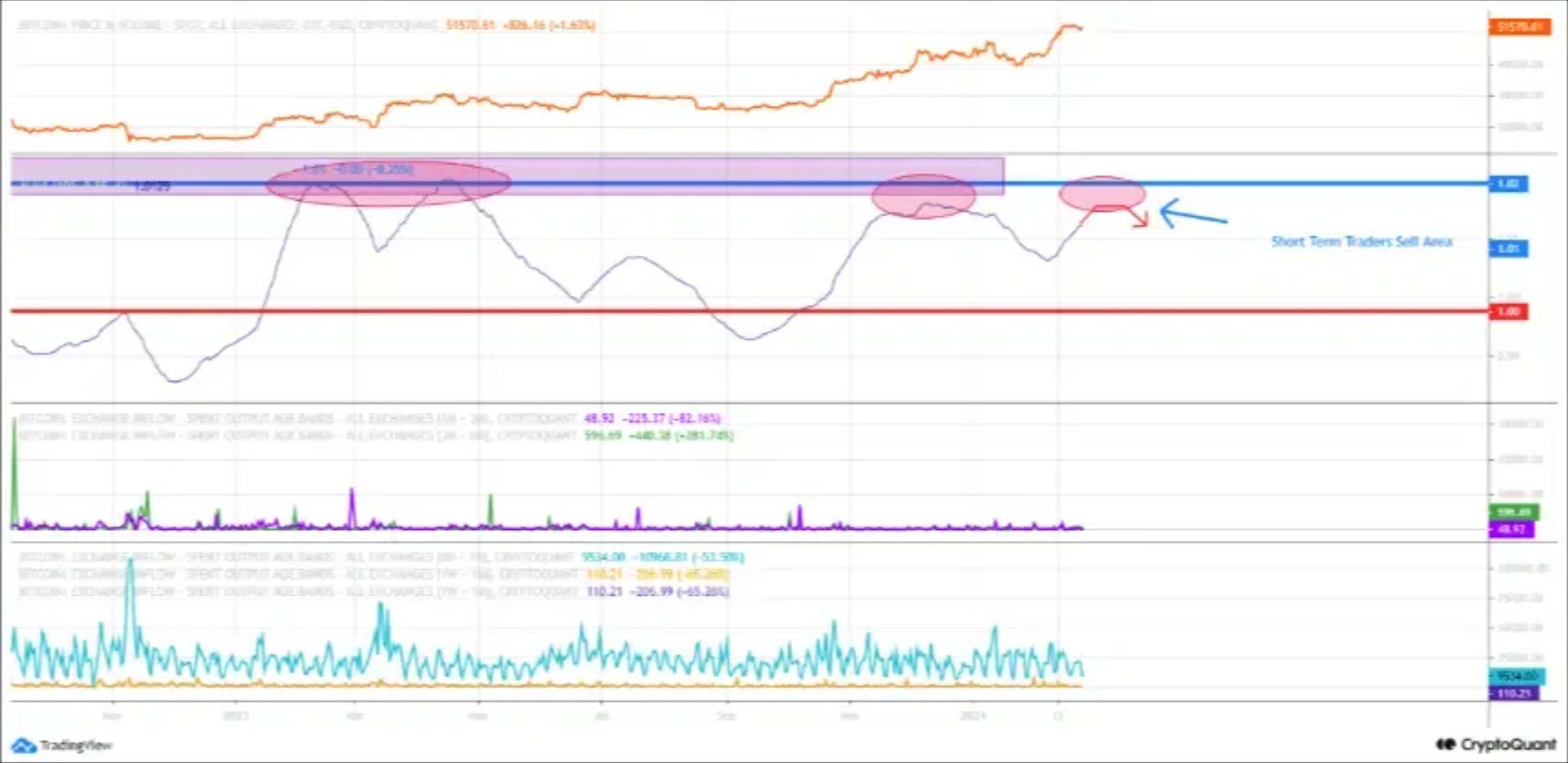While Bitcoin is surging toward $60k the looming correction of Bitcoin (BTC) is a topic that starts garnering attention, sparking debates among market participants. The central question revolves around when this correction will occur, with conflicting forecasts adding to the uncertainty.
One of the key points of contention is whether the correction will precede or follow the upcoming halving event. Views on this matter are divergent, with some predicting a pre-halving correction while others anticipate a surge in prices before any downturn.
On one side of the debate, CryptoOnchain, an anonymous analyst on CryptoQuant, has suggested that Bitcoin could see a downturn to $48,000 in the near future. This analysis is primarily based on the Short Term Holder (STH) Spent Output Profit Ratio (SOPR), which tracks the behavior of short-term investors. An STH-SOPR value exceeding 1 indicates profit-taking by investors, while a value below 1 suggests losses. Currently, the STH-SOPR has surpassed 1, indicating a potential correction in line with previous patterns.

Supporting this view, technical analysis also suggests that Bitcoin is nearing a selling zone for short-term investors, with resistance levels on the technical chart reinforcing the likelihood of a correction.
However, on the other side of the spectrum, analyst Michaël van de Poppe offers a contrasting perspective. He believes that while a correction is inevitable, Bitcoin could first surge to $54,000 or $58,000 before any significant downturn. Van de Poppe also warns that the correction post-halving could be more severe, possibly dropping Bitcoin’s price to as low as $40,000.
I’m unaware whether we will get this correction on #Bitcoin in the short term.
I think that this rally is going to peak between $54-58K and provide a substantial correction to $40-42K after the halving has taken place. pic.twitter.com/vW2t7sklPh
— Michaël van de Poppe (@CryptoMichNL) February 25, 2024
Examining historical trends, it’s evident that Bitcoin often experiences price appreciation leading up to halving events, followed by significant declines thereafter. For instance, prior to the second halving in July 2016, Bitcoin surged to $617 before witnessing a notable drop. A similar pattern was observed during the third halving, with Bitcoin reaching $9,619 before experiencing a considerable decline in the weeks following the event.
In conclusion, while opinions differ on the timing and extent of Bitcoin’s correction, the historical context and current indicators suggest that a correction is on the horizon, with the only uncertainty being exactly when it will occur.



